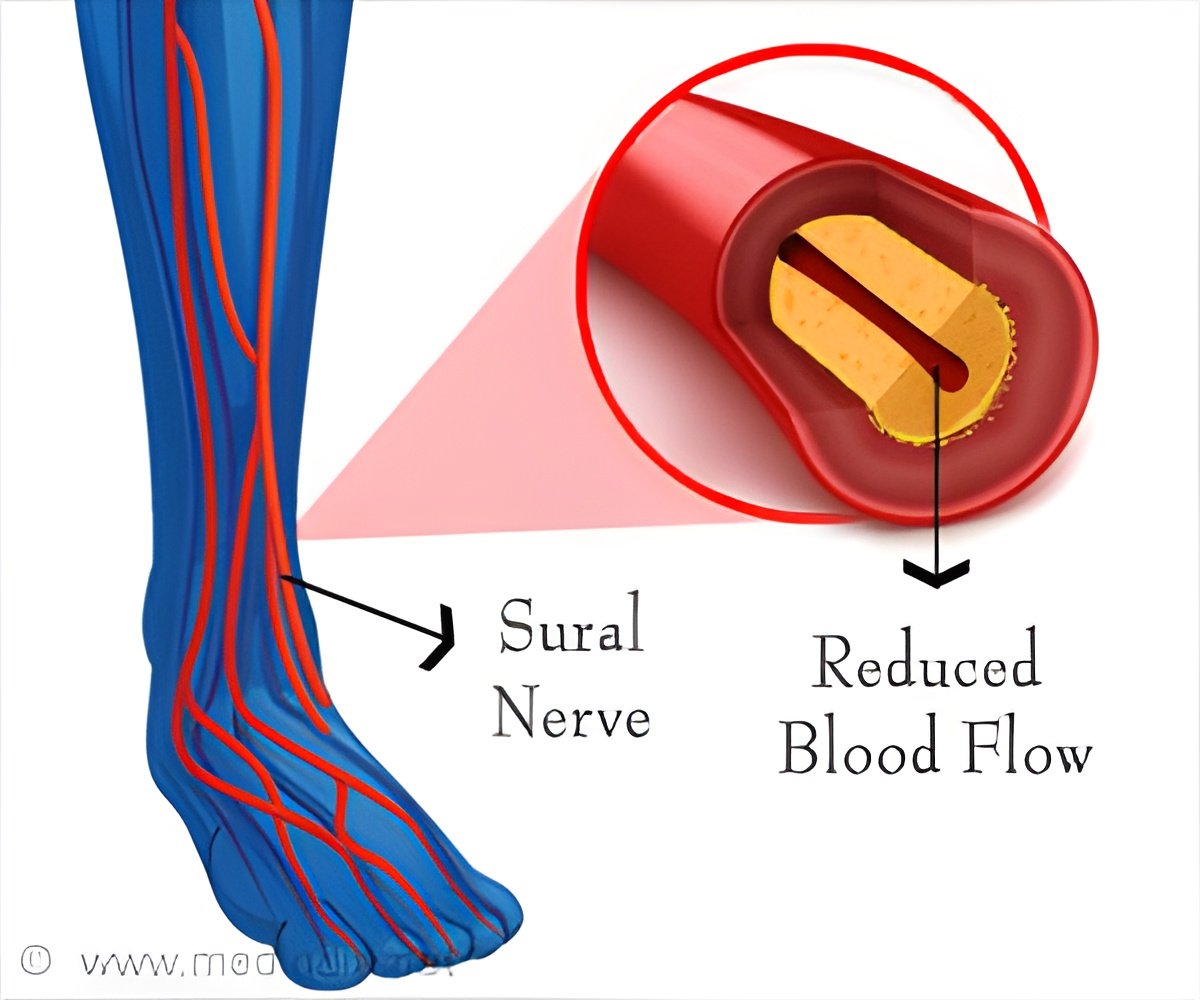Diabetic nerve pain is a complication familiar to most diabetics because of large and small fiber neuropathy. Find out how hypertension and diabetes combine to exacerbate the condition.

Neuropathy in Diabetes
Despite the obvious link between the two conditions we still lack a clear understanding of their role in the development of neuropathy, which is a condition of nerve damage. Peripheral neuropathy is one of the most persistent chronic complications of diabetes and it can have a profound effect on the quality of life. Over the decades, researchers and medical professionals alike have noted a distinct relationship between the presence of hypertension and heart disease, a relationship that could also have some bearing on the development of neuropathy. Researchers have been studying the connection and relationship between these conditions and the progression of neuropathy.Diabetic neuropathy treatment is simply aimed at management of the condition, as there is no cure for neuropathy. Symptoms of neuropathy in the feet and other forms of diabetic nerve pain can therefore only be controlled through the management of blood sugar levels, diet, exercise and blood pressure regulation. This makes it all the more important for us to understand the prevalence and progression of peripheral neuropathy in hypertensive and diabetic patients. Sural nerve damage is a subtype of peripheral neuropathy. A study was recently conducted to this end using a morphological and morphometric study of the sural nerves.
Why is this Important to Diabetes?
The sural nerve is regarded as a nerve that is purely sensory, which is why sural nerve damage explains most of the neuropathy symptoms in diabetes. Sural neuropathy, which is the condition of sural nerve damage, results in abnormal tingling and sensations of pain in the skin around the foot and ankle. This is one of the most common symptoms in diabetics and is known as diabetic foot neuropathy.Findings of the Study
Researchers found that diabetes has a profound effect on the sural nerve myelinated fibers. Myelin is an outer layer or sheath that covers most of the nerves. This heath covers the axon of the neuron and it is essential for the proper transmission and reception of impulses. If there is any damage to myelin or myelinated fiber or if there is a reduction in myelin it affects nerve functioning. As the study indicates, myelin fiber size is significantly reduced in diabetes.On the other hand, small fiber neuropathy was found to be associated with hypertension along with a marked reduction in the number of Schwann cells. In the context of neuropathy this is important, as the Schwann cells are responsible for the creation and production of myelin. A reduced density of Schwann cells, as observed in the study, therefore affects myelin formation and consequently functioning of the nerves. Because of the relationship between diabetes and hypertension there was an increase in the average size of myelinated fibers.
This makes it clear that hypertension contributes to the development of neuropathy and can in fact be one of the biggest risk factors for diabetic neuropathy. The combined action of both diseases, with the two neuropathies causes complex alterations in myelin structure with both large and small fibers neuropathy. When diabetic neuropathy is already present it was also observed that hypertension could then cause an exacerbation of the alterations in myelin fiber.
What are the Implications?
Diabetic neuropathy may not be curable, but with timely intervention and management of your condition, the progression or even the onset of diabetic neuropathy may be prevented and delayed. Make sure that your blood sugar levels are always kept under control with regular monitoring and timely medication. Keeping blood sugar levels consistently within the normal range is the key to preventing neuropathy and other diabetes complications. In addition, dietary and lifestyle modifications are also essential, not just to control diabetes but also to prevent the development of hypertension. Likewise, patients suffering from hypertension should monitor blood sugar levels as well and take steps to prevent the onset of diabetes. As illustrated by the study, the coexistence of hypertension and diabetes is a lot more worrying than either conditions in isolation and sadly having one condition predisposes you to the other.Source-Medindia















